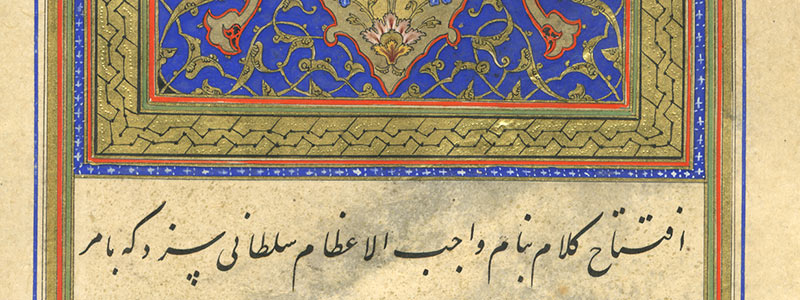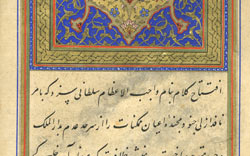Bābā-Shāh was born in Isfahan close to the middle of the sixteenth century. Though his father is not named in many sources, towards the end of a number of recently discovered manuscripts he records his father’s name as Soltān ‘Ali. Bābā-Shāh learned Nasta‘liq from Sayyed Ahmad Mashhadi and soon became one of the script’s most famous masters. He can be recognized as one of the most skilled scribes who wrote in Nasta‘liq, and for this reason he did not spend time writing chalipās or individual pages of calligraphy. Rather, in his extant writings one finds a maturity and exceptional mastery that is seldom seen in other outstanding writers of Nasta‘liq. His writings were cherished, causing them to be difficult to find in his own lifetime.
In addition to the rare manuscripts that are kept in the libraries of Iran, England, and a number of other countries, Bābā-Shāh published a treatise titled Ādāb al-Mashq (“Etiquette of Drilling Calligraphy”), a primary source on Nasta‘liq calligraphy in which he explained the fundamentals of the script. This treatise has for centuries been mistakenly attributed to Mir ‘Emād and has been published a number of times. A copy of this treatise can be found in the University of the Punjab in Lahore written in Bābā-Shāh’s handwriting and bearing his signature, demonstrating conclusively that the text has been incorrectly attributed to Mir ‘Emād.
According to biographical records, Bābā-Shāh died at a young age in 1588 CE.



